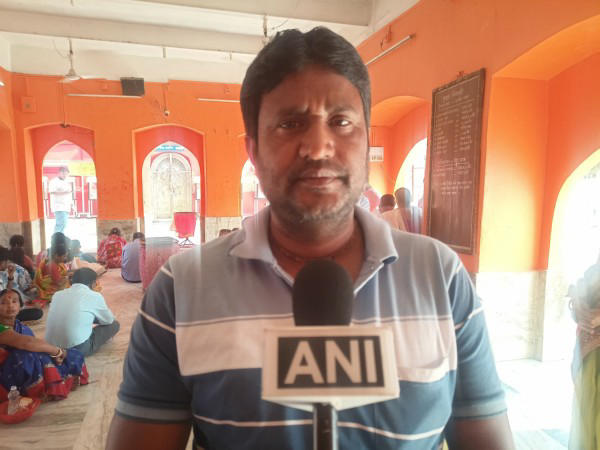The Mata Tripureshwari temple stands as one of the most revered spiritual sites, attracting thousands of pilgrims every year. Beyond its religious significance, the temple also preserves a unique and ancient tradition known as the “Dhak,” a musical practice that has been an integral part of the temple’s rituals for centuries. This time-honored custom continues to resonate within the temple complex, preserving the cultural heritage of the state while drawing attention to the importance of maintaining ancient rituals in the face of modernity.
The Dhak tradition, which involves the use of a large drum to accompany religious ceremonies, remains a vital part of the temple’s daily activities, marking it as not only a place of worship but also a center of cultural preservation. This article explores the enduring significance of the Dhak tradition at the Mata Tripureshwari temple, shedding light on its historical roots, cultural relevance, and the role it continues to play in contemporary Tripura.
The Historical Significance of Dhak
The Dhak is a traditional percussion instrument with deep roots in the folk music of Tripura and the broader northeastern region of India. Its resonating beats have echoed through the corridors of time, accompanying religious rituals, festivals, and important ceremonies for centuries. In the Mata Tripureshwari temple, the Dhak holds a special place, providing a rhythmic foundation for prayer and devotion.
Mata Tripureshwari, a revered deity believed to be the embodiment of Shakti, is worshipped by the people of Tripura with great reverence. The temple, dedicated to her, has been an important religious center for the locals for generations. The Dhak is considered an essential part of the temple’s worship services, as it is believed to invoke the blessings of the goddess, creating a divine atmosphere during prayers and rituals.
Historically, the use of the Dhak in temples can be traced to the royal traditions of Tripura’s ancient kingdoms, where it was employed to accompany religious processions and temple festivals. Over time, it became ingrained in the local culture, evolving into an inseparable part of spiritual life in the region.
The Role of Dhak in Temple Rituals
At the Mata Tripureshwari temple, the Dhak is not merely a musical instrument but a spiritual tool that is used to create an atmosphere conducive to meditation and devotion. The rhythmic beats of the Dhak, often played in synchrony with other traditional instruments, serve to elevate the devotees’ senses, enhancing their connection to the divine during prayers and rituals.
The traditional dhak players, or “Dhakiyas,” are skilled percussionists who undergo rigorous training to master the intricate rhythms. These musicians, often from local communities with generations of experience in this art form, continue to uphold the legacy of the tradition. Their mastery over the instrument ensures that the rhythms produced during temple services remain authentic, resonating with the same intensity and reverence as they did centuries ago.
The Dhak is particularly significant during major temple festivals such as the annual Tripura Sundari Puja, where large crowds gather to participate in the religious celebrations. The beats of the Dhak add a festive and divine aura to the atmosphere, resonating with the hearts of the pilgrims who travel from distant parts of the state and beyond.
Preserving a Cultural Legacy
While the Dhak tradition has remained strong at the Mata Tripureshwari temple, it faces challenges in the modern era. As globalization and technological advancements have influenced cultural practices worldwide, traditional forms of music like the Dhak are sometimes overshadowed by more contemporary musical genres. Despite these challenges, the temple has steadfastly maintained its commitment to preserving this unique aspect of Tripura’s cultural heritage.
Efforts are underway to ensure the continuation of the Dhak tradition for future generations. Local organizations and cultural bodies have started initiatives to promote the importance of the Dhak, both within the religious community and beyond. Workshops and training programs are being organized to teach younger generations how to play the instrument, ensuring that the art form is passed down and remains relevant in the years to come.
The temple authorities have also recognized the importance of involving the local youth in the tradition, offering opportunities for them to participate in the rituals and festivals. By including younger generations in the performance of traditional music, the Dhak tradition is not only preserved but also revitalized, ensuring that it remains a living part of Tripura’s cultural fabric.
The Spiritual and Cultural Impact
For the people of Tripura, the Dhak represents more than just a musical instrument; it is a symbol of their cultural identity and spiritual connection to the goddess Tripureshwari. The beats of the Dhak, echoing through the temple’s sanctum, create a deep sense of community, reinforcing the bond between the deity, the temple, and the devotees.
The continued practice of the Dhak at Mata Tripureshwari temple thus serves as a bridge between the past and the present, keeping alive the traditions that have shaped the spiritual and cultural landscape of Tripura for centuries. In a rapidly changing world, where ancient practices are often at risk of fading into obscurity, the temple stands as a beacon of resilience, proving that the preservation of cultural traditions can coexist with modernization.
Conclusion
The enduring tradition of the Dhak at Mata Tripureshwari temple is a testament to the strength and resilience of Tripura’s cultural and spiritual heritage. As the rhythms of the Dhak continue to reverberate within the temple’s sacred walls, they remind us of the importance of preserving our ancient traditions, ensuring that they remain a source of connection, joy, and spiritual fulfillment for generations to come.




